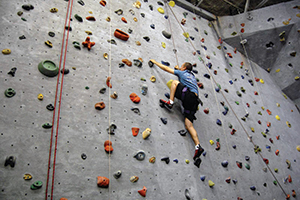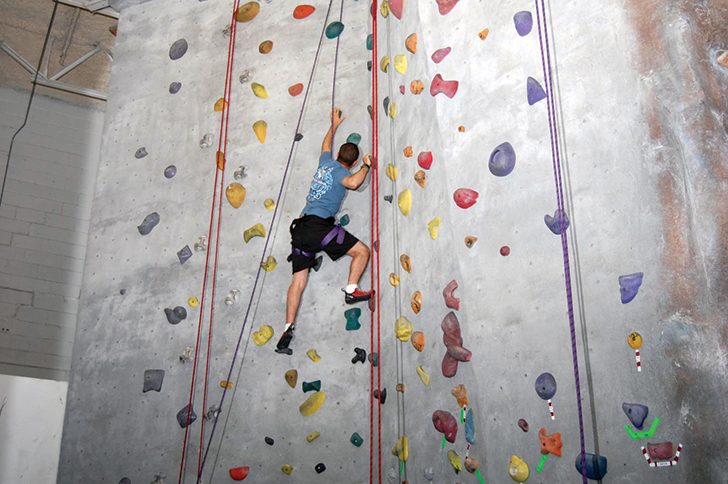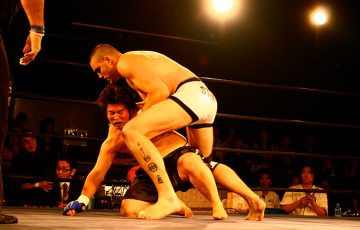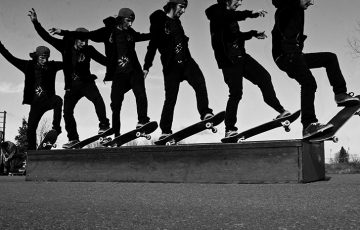 Many Japanese people are avid mountaineers, and mountain walking has always been seen as one of the nation’s favorite pastimes, perhaps starting with the Shinto priests performing traditional rituals on mountaintops of old.
Many Japanese people are avid mountaineers, and mountain walking has always been seen as one of the nation’s favorite pastimes, perhaps starting with the Shinto priests performing traditional rituals on mountaintops of old.
With about 75 percent of the Japanese archipelago consisting of mountains, it’s hardly surprising that there would be incredible rock faces, and rock climbing is now becoming popular with those who want to take up the challenge of traversing up these exhilarating formations.
The goal of rock climbing is to reach the top of a rock formation, and it is a sport that requires an understanding of nature, physical aptitude, and extreme endurance and concentration. The climber must utilize all facets of their balance and agility. This activity is ideal for developing upper body muscle strength and tone.
However, for most rock climbers, the real appeal of the sport is the mental challenge of trying to ascertain the best climbing course. It can also be quite dangerous and requires a thorough knowledge of safety procedures, techniques, and usage of equipment.
While most prefectures, such as Hokkaido, Okinawa, Nagano, and Hiroshima offer fantastic rock climbing opportunities, for Tokyoites, the opportunities to escape to the countryside on a regular basis are few and far between. This makes indoor rock climbing the perfect solution.
Indoor rock climbing doesn’t rely on the weather or seasonal variables, and is in many ways safer, as it is set in a more controlled environment. It is now so popular that it is seen not only as a supplement to outdoor climbing, but as a competitive sport in itself.
Aside from the ease of location and lessened safety concerns, indoor rock climbing allows participants to avoid some of the controversy surrounding outdoor climbing, such as environmental damage and the protection of sacred religious places. It is usually executed in large spaces where there are several artificial structures made of plywood over a metal frame, and sometimes coated with a rock-like texture, helping to replicate the outdoor experience. Other types of walls include everything from textured fiberglass walls, steel and aluminum walls, to massive granite pieces.
Most rock climbing gyms have resin hand holds of various shapes and sizes that are screwed into wooden boards which consist of horizontal roofs attached to vertical slabs (replicating overhangs, under hangs, and cracks), and everything in between. The holds themselves range from easily grabbed to frustratingly small. The surface of the wall may have indents or bulges, and the angles of the boards often provide a unique challenge for new climbers.
The grips are usually color-coded according to difficulty (a system created by experts called “route setters”) and the climber is only allowed to use these color-coded grips as hand holds while the feet can be used on the rock face as well. Despite the challenge, there is substantial safety padding involved, and it is a perfect way for beginners to get acquainted with the sport.
Although rock climbing usually involves climbing up the faces of large rocks, “bouldering” is also popular. This is the most basic form of rock climbing, and it is also used for training. It involves sequencing five or six moves, but because it is close to the ground, you can climb without a rope, and is less dangerous.
J & S in Nakano is a superb spot for bouldering. During your first attempt it may seem incredibly difficult, and the angles of the walls can be terrifying, but it does compel you to try harder to succeed. It is possibly the best workout you can get for ¥1,500 (with a ¥500 entrance fee). Not only is it much cheaper than the gym, but it’s much more mentally stimulating than running on a treadmill. This incredible workout will leave you completely aware of every muscle – or lack thereof – in your arms. J & S rents out everything you need, the floors are padded, and the staff is incredibly helpful.
Another great location in Shibuya is called Peki Peki, just off Cat Street. For more information visit their website: https://www.pekipeki.jp/
If you happen to be in Western Japan, a great place to try is the Osaka City Rock Gym. They claim to be the first indoor rock climbing facility established in Japan. For more information visit their website: http://www.cityrockgym.com/English_facilities.html
Ultimately, indoor rock climbing is a great alternative to going to the gym, and you’ll find that you can climb up the walls in no time, yearning for the next big challenge.
Story by Manami Okazaki
From J SELECT Magazine, January 2010















Recent Comments